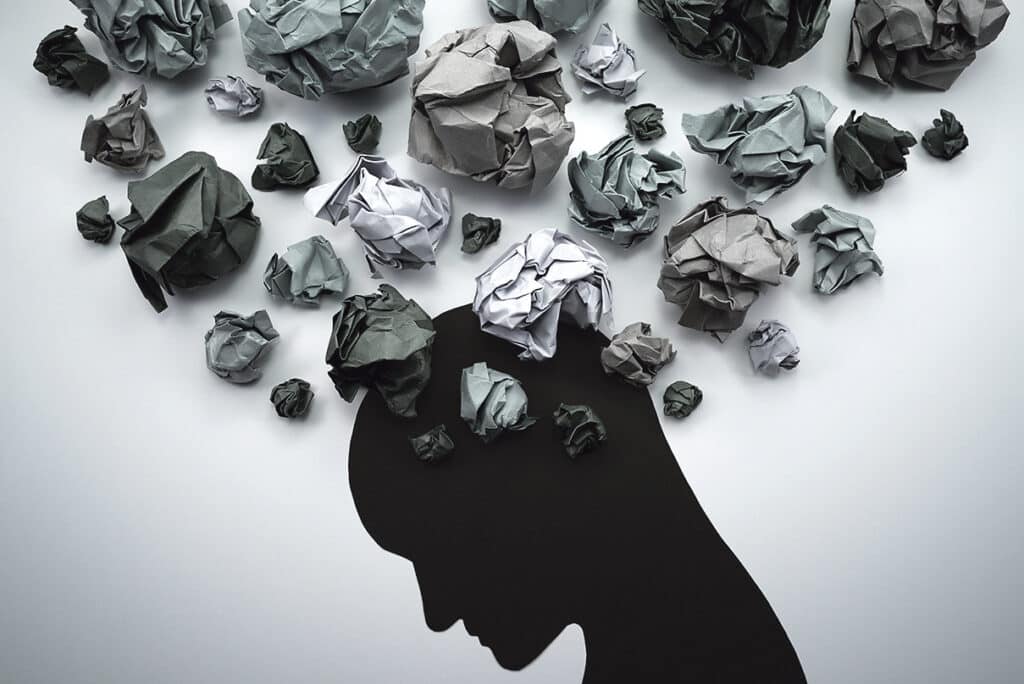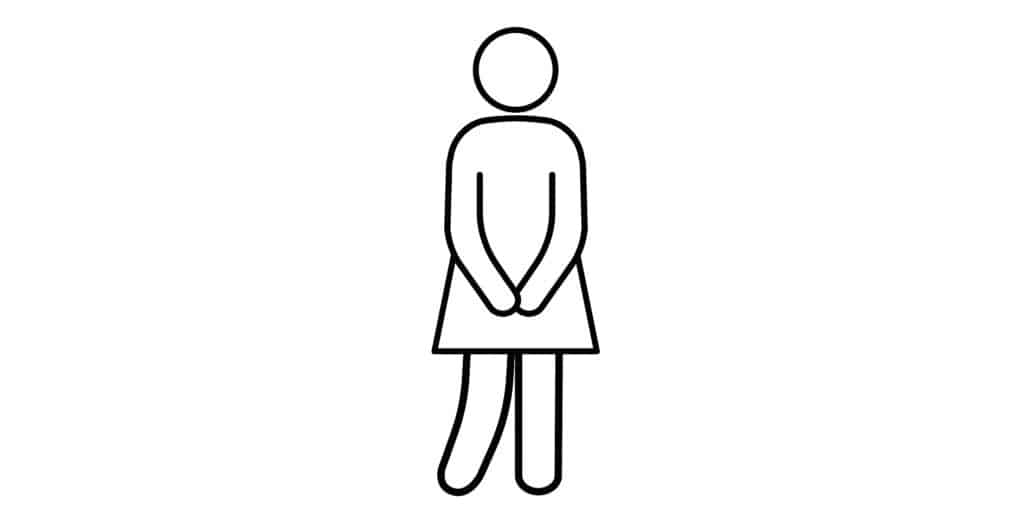
According to the Health at a Glance 2023 report, Ireland has one of the highest rates of mental health illness in Europe, placing third out of 36 countries. Furthermore, in 2023 Aware’s National Survey reported that anxiety rates in Ireland are high, affecting three in four adults, 74 per cent of people surveyed. Almost half of those people, 48 per cent, said they experience anxiety “frequently” with one in five, 20 per cent, saying that most days their anxiety is so bad they can’t function. In 2019, University College Dublin, in conjunction with Jigsaw, conducted the My World Survey 2 – Ireland’s largest and most comprehensive study of young people’s mental health and wellbeing – speaking to more than 19,000 teenagers and young adults aged between the ages of 12- and 25-years-old. The study found that 22 per cent of secondary school level participants experienced severe anxiety. These statistics highlight the reality of the impact that anxiety has on our country and our day to day lives regardless of age or stage of life.
Anxiety is a term that has become commonly used in our language and covers many different unique types of challenges such as general anxiety, social anxiety, performance anxiety or health anxiety. The term has come to somewhat replace sayings such as “my nerves are at me” or “butterflies in my stomach”. Sometimes the term has a confused use with appropriate states of nervousness or fear being referred to as anxiety. For example, starting a new job, having a difficult conversation with a loved one, giving a presentation, or taking a driving test are all situations in which it is quite appropriate to experience a nervous energy and/or thoughts of wanting to do well and not failing. Those appropriate thoughts and feelings are usually accompanied by natural physical sensations such as sweating, flushing, blushing, shaking voice, trembling hands and much more. Certainly not comfortable or completely positive experiences but necessary to give us the energy and concern needed to perform to the best of our ability in a given situation that could be stressful.
The challenge to a person’s mental health occurs when the natural nerves, concern, worry or fear develop into thoughts, feelings and/or behaviours that are restrictive or disruptive in one’s life. For example, someone might feel nervous socially so they decide to avoid a situation such as going to dinner, attending a social event or even going to the shop! Avoiding such situations results in a sense of relief in the moment, the problem at hand seems solved and the fear is resolved. However, the next time an anxiety-provoking situation occurs, the behaviour can be repeated and quite quickly a person might find themselves isolated or unable to leave their house. The thought of the anxiety-provoking situation provokes further anxiety and can compound the issue. As a general rule of thumb, anxiety can be considered an issue if it is no longer temporary or appropriate.
Fear and stress are normal human responses to perceived threat or danger. It is an evolutionary response that ensures our survival. Long before social media, PowerPoint presentations, reading in class, driving tests, getting on planes, queueing in busy supermarkets or giving speeches at weddings, we needed fear and stress responses to ensure that when we glimpsed a tiger’s stripes in the wilderness, our body would activate automatically in way to keep us safe. It is natural for our bodies to release adrenaline and cortisol – stress hormones – in situations of danger or stress. These chemicals ensure we can fight, run or play dead, whichever is appropriate. This is often referred to as ‘fight, flight or freeze’ and is the effect caused by the sympathetic side of our autonomic nervous system, meaning our involuntary nervous system, which has two sides. It results in faster heart rate, shaking in the body, sweating, ringing in ears, hyper focus, the urge to run or fight and, in the most extreme situations, fainting! The other side of our nervous system, the parasympathetic nervous system, is at play when we are at ease and is often referred to as ‘rest and digest’. Our nervous system is very much outside of our control and runs in the background.
Yet, nowadays there are no tigers to flee from and no caves to explore. Our natural fear response is now triggered by perceived dangers to our safety where there may be none. Whereas once upon time fear would ensure our safety, it now often results in disruption in living life. Anxiety can be like riding an exercise bike in your sitting room; it creates a lot of energy in the body, it seems difficult in the mind and it gets you nowhere! Often, these fears are fuelled by deep beliefs that we hold around being judged, ending up alone, something bad happening, being found out or letting others down, to name a few of the more common ones. Quite commonly, underneath anxiety, the issue can be based on a ‘what if?’ mindset, catastrophising and thinking about a future that has not happened, causing a need to avoid it from happening in whatever way is possible. As Kahlil Gibran, best known as the author of ‘The Prophet’, states “Our anxiety does not come from thinking about the future, but from wanting to control it”.
From a Cognitive Behavioural Therapy (CBT) perspective, we encounter situations all the time but some of them trigger our fears or unhelpful core beliefs. It is the beliefs that lead to the physical, mental and behavioural experiences of anxiety as opposed to anxiety being caused by a specific situation.
In psychotherapy and counselling sessions there are many ways to address anxiety. Some approaches, such as Person Centred Therapy, Psychoanalysis or the Internal Family Systems model, would explore the origin of the fear or belief that is aggravating the body’s natural fear response. Often conceptualising it as a part of the person or an experience that inhibits our natural tendency to grow and develop throughout life. This can involve diving into the past and exploring early childhood relationships and experiences. I am sure most people can relate to early life experiences where we were told “don’t speak to strangers”, “say nothing till you hear more”, “sit up straight” or “don’t speak in class”. For some people, there may have been experiences of abuse such as having their left hand hit with a cane or ruler to teach them to write ‘right handed’. Others may have experienced being sexually or physically abused institutionally or in the home. There are many other ways in which an adult or authority figure might have forced a person to associate behaviour, thoughts or feelings with a perceived fear of punishment or negative outcomes in the moment.
Other times, anxiety may have formed due to a specific once-off traumatic event in a person’s life, regardless of age, such as a car crash, health scare, illness diagnosis or a particularly intense social situation that may have been experienced as frightening, embarrassing or shameful. It is not always necessary to explore the past in therapy, it can also be the case that the present and future can be addressed through therapeutic approaches such as CBT or Acceptance and Commitment Therapy (ACT). Sometimes, Mindfulness Based Interventions (MBI) can be the more useful approach, which involves learning and developing skills to manage anxiety. Those skills can then promote ease so a person can learn the fear is usually unfounded through experiencing things they fear the most in a supported way. Many other things can also help with anxiety such as medication, acupuncture, exercise, meditation and a healthy diet. These are usually quite effective when combined with therapy. One thing is for certain, anxiety is common and can be disruptive to living and enjoying one’s life. In my experience working with clients, another thing is quite certain, anxiety can be addressed quite effectively in psychotherapy and counselling.
For more information:
phone: 085 1300573
email: info@leomuckley.com
web: www.leomuckley.com
social Media:
@leomuckleypsychotherapy



